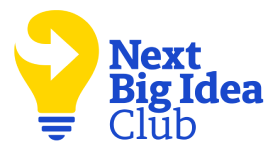Madeline Mann is an HR and Recruiting leader and featured job search coach on Spotify and LinkedIn Learning. She has garnered an audience of millions of people, and is best known for her award-winning job search YouTube channel, Self Made Millennial. Her job search coaching programs have led to thousands of success stories. Her work has been featured on ABC, Bloomberg, New York Times, and more.
What’s the big idea?
The traditional job search is broken. It’s exhausting, frustrating, and can make even the most talented among us feel invisible. Fortunately, there is a way to turn the whole process upside down. A mindset shift from Job Seeking to Job Shopping will cause companies to seek you out, instead of the other way around. Job Shoppers have learned how to position themselves as an irresistible hire, and you can too.
Below, Madeline shares five key insights from her new book, Reverse the Search: How to Turn Job Seeking into Job Shopping. Listen to the audio version—read by Madeline herself—in the Next Big Idea App.

1. Shift from job searching to Job Shopping.
What exactly is Job Shopping? Instead of you chasing companies, Job Shopping is about making companies compete for you. It’s a strategic approach where you focus your energy on a specific type of opportunity and then position yourself as absolutely irresistible to the companies hiring for that role.
The magic of Job Shopping is that it doesn’t just help you land offers—it can lead to companies creating roles just for you. This isn’t just a pipe dream. It works even in tough job markets, even for candidates who feel “unconventional” in some way.
There are two types of people in the job search world: the Job Seeker and the Job Shopper.
A Job Seeker has unclear goals. They feel busy and exhausted from endlessly applying to jobs, hoping that effort will translate into results. They think, “If I just add another certification or another degree, then I’ll finally stand out.” They feature a broad range of skills in their job search documents because they want to appear qualified for as many types of roles as they can so that they don’t “miss out.” And when they do get to an interview, their focus is on convincing the company of their skills.
A Job Shopper has a different approach. They know exactly what they want. Their job search is focused and in their control. Instead of wasting a large amount of time on job boards, they find more effective ways to demonstrate their skillset and get noticed. They tailor their positioning to exactly what their target companies need, and their interviews are about collaborating with the employer to find the best fit. Job Shoppers leave interviewers feeling like they’ve met someone in a league of their own. This results in multiple offers and companies actively seeking them.
The first step to becoming a Job Shopper is to step into the mind of the employer. The more you can understand their needs and look at your expertise simply as a service to meet those needs, you’ll start zeroing in on exactly what will make you irresistible in their eyes.
2. Your resume is not about you.
Your resume is not about your career journey, your proudest moments, or the skills you’ve picked up along the way. It’s about the company. Specifically, it’s about how you can solve their problems and deliver results.
Many job seekers fall into the trap of Autobiography Syndrome. They see their resume as a detailed account of everything they’ve done. But the reality is that recruiters and hiring managers don’t have the time or interest to piece together your story to figure out if you’re a fit for the job.
Instead, think of your resume as a sales page. A sales page doesn’t give you the entire history of a product. It tells you why this product is exactly what you need, right now. Your resume should do the same. Start by understanding what the company is looking for—read the job description like a detective. Then, position yourself as the solution.
“Stop thinking about what you want to share and start thinking about what the company needs to know.”
Here is a real-world example: I worked with a client who had a legal background, transitioned into sales, and now wanted to be a product manager. His resume and LinkedIn profile tried to mash all this together, and he positioned himself with the headline, “Strategic Legal Professional and Persuasive Sales Maven Driving Tech Innovation as a Visionary Product Manager.” Sounds impressive, right? But it was distracting. No hiring manager could tell if he was a product manager or still stuck in his past careers.
We reworked Neil’s materials to focus entirely on his product management skills. Suddenly, the narrative wasn’t about what he used to do. It was about what he could do now for the companies hiring him. It worked. Neil got many interviews and, ultimately, the role he wanted.
Stop thinking about what you want to share and start thinking about what the company needs to know. Make your resume laser-focused on the value you bring to this specific role. Tailor it for the job, and you’ll go from presenting a dense autobiography to a winning sales pitch.
3. Job seekers have more power than they think.
It is easy to feel like you are at the company’s whim in the job search. It can seem like they have endless options in candidates, so the best you can do is hope that they see something in you to give you an offer. But this isn’t the case.
After leading human resources departments for years and hiring thousands of people, I know what’s happening inside businesses. Job seekers have more power in the hiring process than they realize. I was once involved in a search for a Product Designer. Out of 300 applications, only nine met the qualifications we were looking for. Let that sink in for a moment. While companies are receiving record amounts of applications, the number of people who are qualified, or heck, even read the job description, is incredibly low. We then narrowed those nine down to three who we would be interested in hiring. Our top choice would cost us more money and more time to hire. She lived out of state and needed four weeks and several thousands of dollars in relocation assistance to work with us. We had two other promising candidates, and we were a growth-stage business that didn’t have an endless budget, so why not go for the cheaper, faster options?
Because skilled professionals aren’t interchangeable. They’re not commodities. Anyone who has hired before knows that a good hire is worth paying for and waiting for. This is quite common: Once a company falls in love with you, they will make sure you join their team. Companies aren’t just hiring skill sets; they’re hiring unique combinations of skills, character, and attitude. That’s why the Job Shopper strategies are so powerful. When you approach the job market strategically, you rise above the noise. You are no longer just another résumé in the pile.
4. Have job opportunities come to you.
Imagine you’re sitting at your desk, enjoying morning coffee, and a recruiter from a company you’re fond of reaches out to you. They tell you that based on your skills and experience, you’d be a perfect fit for a role they’re eager to fill. You didn’t apply for this job; you weren’t even looking; but here they are, knocking on your digital door. How does that happen?
“You need to make sure you’re findable.”
It’s because many companies use sourcing to fill roles with skilled candidates. Instead of waiting for candidates to apply, companies use sourcing as a proactive strategy to find the right talent. They hire recruiters, use advanced tools, and tap into databases to track down individuals with the exact skills and experience they need. When having great talent matters, waiting for the right candidate to stumble across a job posting is too risky. The best talent gets snapped up quickly, and sourcing allows companies to move fast. Many of my clients using the Job Shopping method report landing over 50 percent of their job interviews this way, often for top companies in competitive roles.
Since companies are actively searching for candidates, you need to make sure you’re findable. This doesn’t mean you have to be the absolute best in your field. You just need to be more searchable than the others. Recruiters can’t reach out if you are nowhere to be found online. Whether it’s a strong LinkedIn profile, a clear online presence, or showcasing your expertise, your goal is to make it as easy as possible for recruiters to discover you. Once you get your online presence optimized, some low-lift updates every few months will be all you need to keep the opportunities rolling.
5. Have a perspective in the interview.
Two candidates, Dan and Chloe, were interviewing for an open Marketing role at the company I worked for. They were equally qualified on paper, but Chloe was the clear winner in every interview. It was because she was honest and clear about what she was looking for in her next opportunity, while Dan was agreeable and tended to take a middle-of-the-road stance on every question. Think of it as extreme positivity, where he portrayed himself as interested and liking everything to the point that the team felt like they didn’t get to know him. Yet this is the strategy most job seekers take, where they practice rehearsed answers that they hope the company is looking for—but actually, it comes across as untrustworthy.
When Chloe showed that she had standards and a clear vision for her career, the hiring team became excited about her joining. They felt she wasn’t just looking for any job—she was looking for their job. So, come into your interviews thinking critically about the opportunity. Research the company deeply. Understand their challenges, goals, and how you might fit into their big picture. Come prepared with specific, thoughtful questions. When they see you vetting the opportunity, they will feel more confident in giving you an offer (since you’re accepting this job because it’s the right job, instead of a job for right now until you find a better one), and they often start selling you on the opportunity.
The best interviews are mutual explorations. You are not just selling yourself; you’re also assessing if this role is the right fit for you. This mindset shift is a game-changer.
To listen to the audio version read by author Madeline Mann, download the Next Big Idea App today:































